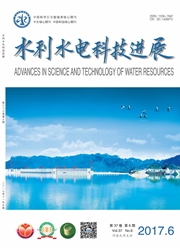

 中文摘要:
中文摘要:
在综述高分辨率层序地层学的形成、发展及其在第四纪地层和河流相地层对比中的应用的基础上,分析了高分辨率层序地层学在第四纪含水层划分与对比中的应用前景;应用高分辨率层序地层学理论,深入分析基准面旋回、可容纳空间变化与地层响应的关系,建立河流相等时地层格架,获取不同微相的分布特征和砂体的时空展布规律,可为平原区广泛分布的松散河流相第四纪含水层(组)的科学划分和对比提供新思路.指出高分辨率层序地层学在第四纪含水层划分与对比的应用中,需加强定量化研究,在明确各级次基准面旋回时限范围的基础上,对不同级次基准面旋回进行规范识别和划分;应尤其重视在地质过程响应的沉积动力学分析的基础上区分河流相地层的自旋回和异旋回作用.
 英文摘要:
英文摘要:
The formation and development of high-resolution sequence stratigraphy and its application in the comparison of Quaternary and fluvial facies strata are reviewed. Potential future applications of high-resolution sequence stratigraphy in division and comparison of the Quaternary aquifer are analyzed. Using the high-resolution sequence stratigraphy theory, the relationship between the base level cycle, accommodation, and stratum response can be analyzed, the isochronal stratigraphic framework of fluvial facies can be established, and the distribution characteristics of different microfacies and spatio-temporal distribution of a fluvial sand body can be found, which is conducive to the reasonable division and comparison of the loose Quaternary aquifer ( group) of fluvial facies in plain regions. In the application, quantitative study should be strengthened. On the basis of defining the time range, all levels of base level cycles can be identified and divided on specification. Special attention should be paid to distinguishing the auto-cycle and allo-cycle of the fluvial facies stratum based on the sedimentary dynamics analysis of geological process-response.
 同期刊论文项目
同期刊论文项目
 同项目期刊论文
同项目期刊论文
 期刊信息
期刊信息
